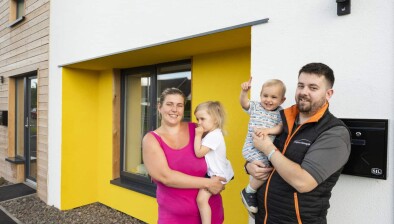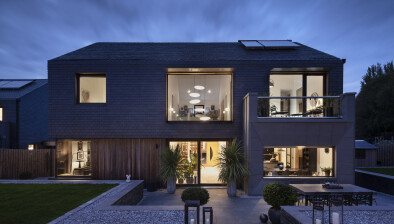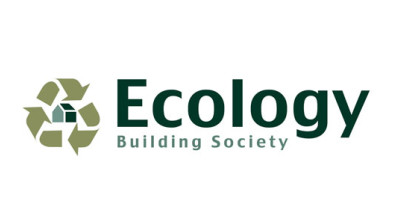Collette Miller: Passing on the Passivhaus parcel – Unwrapping the benefits and drawbacks for social housing

Collette Miller
Collette Miller explores the Passivhaus and EnerPHit energy efficiency standards, outlining their development, core principles, and the benefits and challenges associated with their adoption by social housing providers aiming to meet net zero targets and improve tenant well-being.
In the 1980s, the Passivhaus (or ‘passive house’) standard was conceptualised in a conversation between Bo Adamson of Lund University in Sweden and Wolfgang Feist of the Institut für Wohnen und Umwelt (Institute for Housing and Environment) in Germany. Their goal was to create low-energy buildings that used passive technologies to maintain comfortable indoor temperatures with minimal energy for heating or cooling.
Over the years, this standard has evolved into a tool for reducing home carbon emissions. Currently, only 1% of new UK housing projects meet the Passivhaus criteria, but the UK Passivhaus Trust (an independent, non-profit organisation that promotes the adoption of the Passivhaus standard in the UK) aims to raise this to 10% by 2035.
Scotland is leading the way in terms of Passivhaus certifications with a significant number being awarded to social homes. Given the Scottish Government’s plans to introduce a mandatory Passivhaus-equivalent standard, now is a strategic time for social housing providers to explore Passivhaus certification to maintain momentum in their energy efficiency initiatives.
Understanding Passivhaus
The Passivhaus building standard is a rating system that individuals and organisations are increasingly looking to when building new developments because of its success in European countries such as Germany, which has over 40,000 Passivhaus-certified homes.
The standard is particularly stringent as the aim is for the building to remain at an almost constant temperature where very little energy is required to heat or cool it. The types of designs or works which are used to meet the Passivhaus standard include:
- Thermal bridge-free construction (reducing areas in a home where heat is lost such as where a window frame connects to the wall)
- Mechanical ventilation and heat recovery (MVHR) systems
- Airtight building fabric
An integral aspect of the Passivhaus standard is enhancing comfort. By incorporating this standard, homes benefit from quieter heating and air conditioning systems, as well as improved ventilation that boosts the flow of fresh air, creating a more pleasant and comfortable living environment.
Note that the benefits of Passivhaus rely, to some extent, on proper usage by occupants, such as avoiding unnecessary window opening or leaving taps running. To help tenants get the most out of their homes, social landlords may wish to offer relevant training or guidance.
Exploring the EnerPHit Standard
Although Passivhaus relates to new-build properties, there is an equivalent standard for retrofitting existing buildings, known as EnerPHit. This standard is designed to enhance the energy efficiency of buildings that cannot fully meet the Passivhaus criteria. EnerPHit requirements are less stringent but still aim to significantly improve the energy performance and indoor comfort of the building.
To achieve the EnerPHit standard, various measures may be implemented, such as:
- Installing high-performance, triple-glazed windows to reduce heat loss and improve insulation.
- Utilising efficient heat generation systems, such as heat pumps, to maintain a comfortable indoor temperature with minimal energy usage.
- Adding wall or roof insulation to prevent heat escape and enhance thermal comfort.
These upgrades ensure that retrofitted buildings achieve notable reductions in energy consumption and carbon emissions, while also creating a more comfortable and healthier living environment for occupants.
The Case for Passivhaus
While the adoption of the Passivhaus standard can bring several benefits, it is essential to recognise that there are challenges as well.
Challenges of Passivhaus Adoption
Implementing the “principles of Passivhaus” rather than strictly following the formal certification process may be preferable due to concerns about focusing on process/style rather than the substance of efficiency and comfort improvements.
The administrative burden of Passivhaus can be significant, requiring additional resources from the client side for form-filling, testing, and certification. The lack of accredited Passivhaus certifiers can results in delays in certificates being issued and pose challenges during the build process.
There is also some recent market evidence that seeking Passivhaus certification may directly increase tender costs due to the limited number of certified sub-contractors.
Benefits for Tenants
In Passivhaus-certified homes, tenants’ bills would be reduced alongside the risk of dampness and mould. Tenants’ homes would also be more comfortable to live in, increasing their satisfaction. Satisfied tenants are less likely to have complaints, making this a win-win situation – happy tenant, happy life!
Contributing to Net Zero Goals
Passivhaus-certified homes have significantly fewer carbon emissions than the average home due to the need for manual heating to be kept to a minimum. This is especially important as a fifth of the UK’s greenhouse gas emissions originate from residential buildings.
Scotland’s Net Zero target is a crucial driver for social landlords to adopt energy-efficient standards in housing. The Scottish Government aims to achieve Net Zero by 2045, and enhancing the energy performance of social housing plays a vital role in reaching this goal. By implementing Passivhaus or EnerPHit principles, social landlords can contribute significantly to reducing carbon emissions and advancing sustainability.
Impact on Housing Stock Value
Although it is often suggested that Passivhaus or EnerPHit-certified properties have an increased value due to their energy efficiency and comfort, there is currently no conclusive evidence to support a specific percentage uplift in property value.
Ensuring Tenant Protection
Upholding Tenancy Rights
When conducting EnerPHit works on a property occupied by a tenant, social landlords must have regard to the tenant’s rights and obligations within their tenancy agreement. For example, if substantial work is needed for the retrofit that cannot be carried out while the tenant resides in the property, the social landlord will need to arrange suitable temporary decant accommodation for the tenant and their family. As a worst-case scenario, if the tenant is unwilling to move to decant accommodation, the social landlord may need to seek an eviction order from the Sheriff Court, which would be contingent on the social landlord’s ability to provide suitable alternative accommodation for the tenant and their family. The social landlord may also be liable to the tenant for home loss and/or disturbance compensation payments.
Addressing Equalities
When retrofitting a home to the EnerPHit standard, social housing providers must consider equality and accessibility. For example, without adequate training or accessible features (such as voice control or tactile buttons), tenants with accessibility needs could lose control of their heating system, impacting their comfort and well-being. Overlooking the specific requirements of tenants with accessibility needs may breach social landlord’s duties under the Equality Act 2010, particularly the public sector equality duty.
Passivhaus Examples in Social Housing
There are several projects in Scotland that highlight the application of Passivhaus and EnerPHit standards in social housing. These projects, while showcasing the feasibility and benefits, also reflect the challenges and considerations involved:
- Glasgow’s largest Passivhaus development at Springfield Cross, Dalmarnock, developed by West of Scotland Housing Association
- Renfrewshire Council’s proposed ambitious 3,500 social housing retrofit project to EnerPHit or AECB Retrofit Standards (a less onerous retrofitting standard)
- The ‘Niddrie Road Retrofit’ project in Glasgow, where Southside Housing Association refurbished pre-1919 tenements to EnerPHit standards
New Passivhaus Equivalent in Scotland
The Scottish Government intends to implement a mandatory Passivhaus equivalent standard for new build developments in 2028, with the revised building standards to be published early 2026 and initially introduced as voluntary.
Conclusion
Social housing providers should carefully consider developing Passivhaus homes or retrofitting their current housing stock to EnerPHit where feasible. While achieving Passivhaus certification can enhance tenant satisfaction and contribute to net zero goals, it is also important to recognise the challenges and weigh the benefits against the potential costs and administrative burdens.
Ultimately, it may be more practical to implement the principles of Passivhaus or EnerPHit without necessarily ticking all the boxes and obtaining the formal certification. This approach can still achieve significant improvements in energy efficiency, tenant satisfaction, and sustainability while avoiding some of the complexities and costs associated with full certification.
We offer comprehensive guidance on adopting this standard, tailored to your development projects and responsibilities as a social landlord.
Achieving Net Zero in Social Housing
For anyone involved in achieving net zero in social housing through retrofit projects, Harper Macleod is running in-person two panel events – on 5 June in Edinburgh and 10 June in Glasgow. Spaces are limited. Sign up here.
- Collette Miller is a partner in the social housing team at law firm Harper Macleod. This article was co-written by trainee solicitor Milly McGregor.







